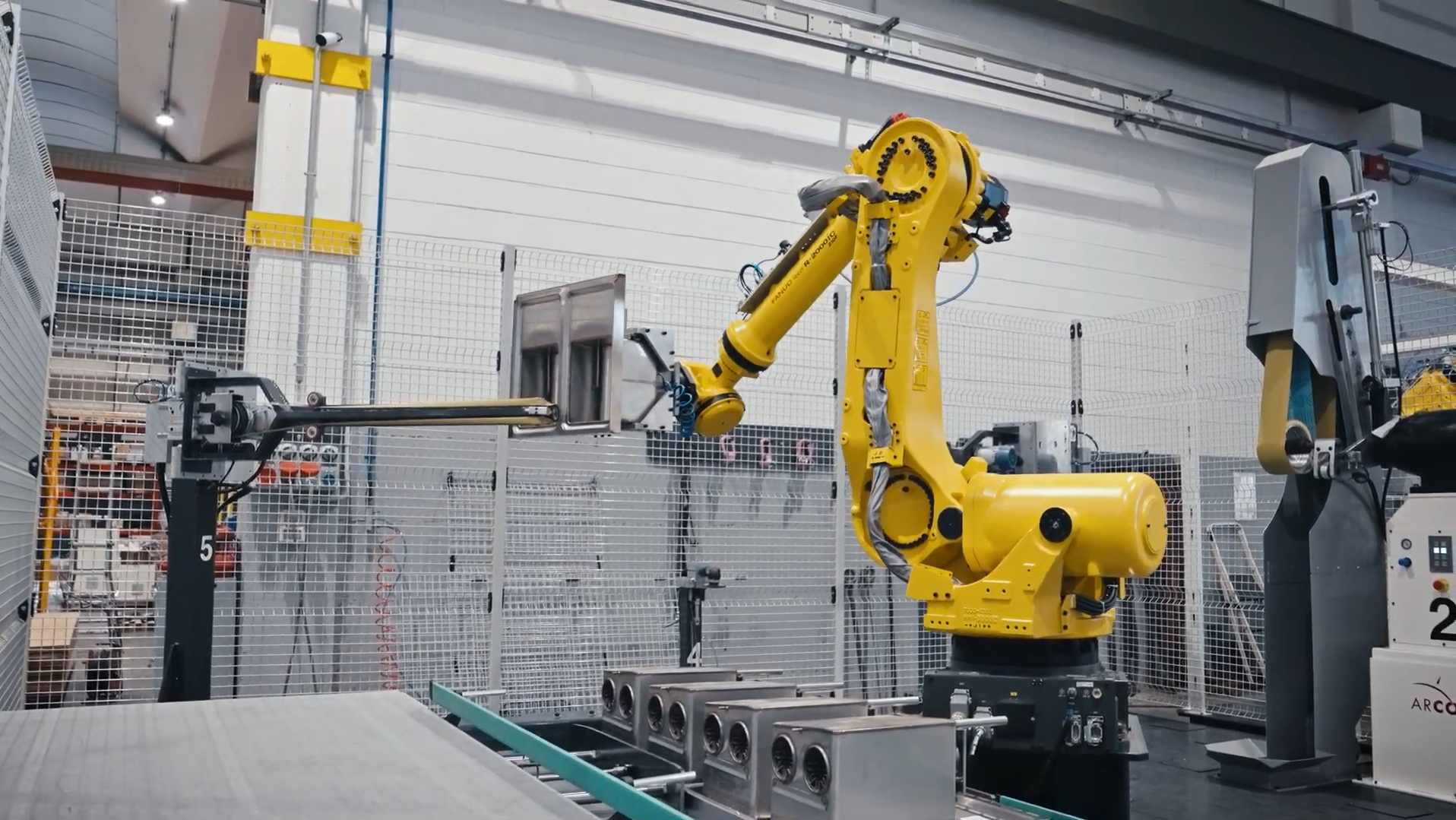In recent decades, industrial automation has made tremendous progress thanks to increasingly advanced robotic solutions. Among these, one of the most versatile and widespread technologies is undoubtedly the articulated robot arm. But what makes it so effective in modern production environments? In this article, we explore every aspect of the articulated arm: what it is, how it works, where it is used, and why more and more companies are choosing it.
Table of Contents
What Is an Articulated Robot Arm?
An articulated robot arm is a type of industrial robot equipped with multiple rotary joints, allowing it to move with great freedom in space. Its structure resembles that of a human arm, with a fixed base and a series of segments connected by joints, also known as axes or degrees of freedom (DoF). The number of joints determines the flexibility and complexity of movements: the most common models have 4 to 6 axes, but there are also more advanced configurations.
Unlike other types of robots (Cartesian, SCARA, Delta), the articulated robot arm is designed to operate in complex three-dimensional environments, maintaining precision, speed, and load capacity. This makes it extremely useful in dynamic production settings that demand adaptability and quick changeovers. It can also be employed in hazardous or hard-to-reach environments, enhancing overall process safety.
How Does an Articulated Robot Arm Work?
The operation of an articulated robot arm is based on a combination of actuators, sensors, and controllers. Each axis is powered by a motor (usually electric, but sometimes hydraulic or pneumatic in more robust models) that controls its movement.
The coordinated movement of the axes allows the robot to precisely position the end-effector (gripper, tool, torch, etc.) in 3D space. Motion is controlled via dedicated programming software, which manages both movements and feedback from various sensors (machine vision, force, torque, temperature).
Modern robotic architectures integrate with PLC and MES systems, making the robot a fully integrated component of the production line and data flow. This enables advanced production management and complete traceability. In many cases, these systems are designed to work in synergy with other machines and equipment in the plant, improving overall process coherence and efficiency. Advancements in control software also allow for digital simulation of work cycles, helping to test and optimize programs before actual implementation.
Main Applications
The articulated robot arm is used in a wide range of industrial applications, thanks to its flexibility and ability to operate in dynamic environments. Key tasks include:
- Part handling: machine loading/unloading, internal transport, machine tending for presses and CNCs
- Welding: MIG, TIG, arc welding, even on complex geometries
- Polishing and deburring: surface finishing on metals, plastics, and composite materials
- Painting and spraying: with smooth trajectories and controlled deposition
- Assembly: even in confined spaces or with delicate components
- Quality control: visual inspection and automated measurements using cameras or sensors
In all these operations, the articulated arm ensures not only higher productivity but also consistent quality, minimizing variations caused by human factors. In high-precision scenarios—such as electronics manufacturing or surface finishing—robotic automation is essential.
Industries of Use
The versatility of the articulated robot arm makes it applicable across many production sectors, from heavy industry to high-precision manufacturing. It is widely used in the automotive industry for assembly, welding, and handling of heavy or bulky parts. In aerospace, it is ideal for working on lightweight materials such as titanium and aluminum alloys, where extreme precision is required. It is also used in metalworking for surface finishing, in electronics for micro-assembly, and in packaging and logistics for rapid and efficient material handling.
The medical and pharmaceutical sectors also benefit from these robots, especially for sterile packaging, precise dosing, and automated quality control. Increasingly, articulated arms are found in hybrid production environments that combine human and machine collaboration for tasks requiring both precision and safety.
Their use is also growing in the cosmetics, jewelry, and furniture sectors, where they automate delicate and aesthetic processes or work with fine materials. This results in greater uniformity and a significant reduction in waste.
Advantages of an Articulated Robot Arm
Adopting an articulated robot arm in manufacturing brings numerous benefits, both economically and in terms of quality:
- Maximum operational flexibility
- High precision and repeatability, even in complex tasks
- Shorter cycle times
- Increased workplace safety
- Seamless integration with factory systems
- ROI in the medium term, especially in continuous production environments
Additionally, this technology can be quickly reconfigured to suit changing production needs, making it ideal for companies handling small batches or frequent product changes. Automation also helps mitigate the growing shortage of skilled labor. Furthermore, robotic performance does not degrade over time, ensuring consistent quality that human labor alone cannot guarantee.
When to Use an Articulated Robot Arm
Implementing an articulated robot arm is especially beneficial when automating high-frequency repetitive tasks, handling complex geometries, or increasing output while maintaining consistent quality. It is also useful when safety or ergonomics pose limitations, or when flexible production is needed for multiple product lines.
Articulated arms support a wide variety of tools and accessories—from vision systems to custom grippers—enabling them to perform different functions within the same line. Their advanced programmability allows for precise, complex work sequences, improving overall process quality. In the context of digital transformation and Industry 4.0, these robots are a strategic component in building smarter, more adaptive, and connected systems.
In a world increasingly moving toward Industry 5.0, where human-machine collaboration is key to smarter and more sustainable production environments, the articulated robot arm becomes a fundamental ally. The focus is no longer just on automation, but on enhancing human capabilities through adaptable and intelligent technology.
At Arcos, the articulated arm is often integrated into custom robotic cells for polishing, deburring, or handling, tailored to meet specific client needs. Each project is based on an in-depth analysis of production flows to ensure maximum automation effectiveness. Our technical team oversees all phases—from initial study to 3D design, through to installation and post-sales support.
Conclusion
The articulated robot arm is one of the most powerful tools available to industry today to meet the challenges of productivity, quality, and flexibility. Its ability to adapt to various tasks and industries makes it a strategic choice for companies focused on efficiency and innovation.
Partnering with an experienced provider like Arcos means not only choosing the right technology but also implementing it effectively, integrated into a cohesive and optimized production system. Thanks to our in-house design capabilities and the option to customize each solution, we deliver more than just robots—we deliver tailored answers to the demands of modern industry.


